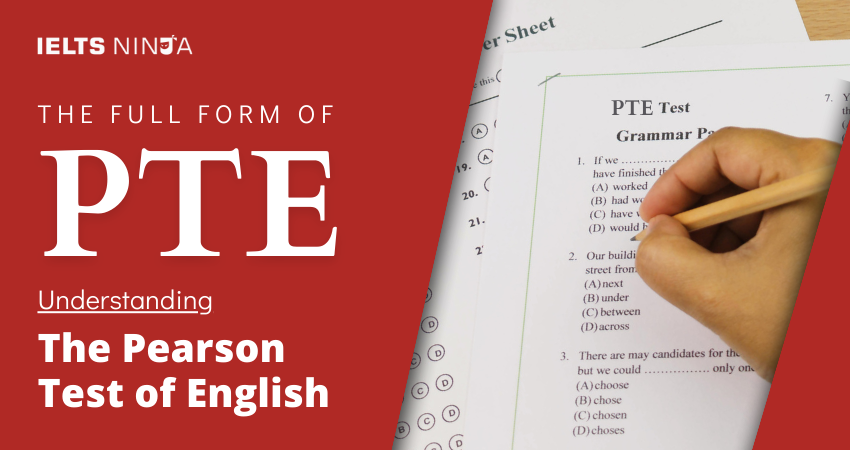In the realm of language proficiency testing and education, acronyms often represent standardized tests designed to assess individuals’ language skills. One such acronym that holds significant importance in the field of English language proficiency testing is “PTE.” PTE stands for “Pearson Test of English.” In this article, we will delve into the full form of PTE, understand its purpose, format, and its crucial role in assessing English language proficiency for academic and professional purposes.
What Does PTE Stand For?
PTE stands for “Pearson Test of English”. It is a series of standardized English language proficiency tests developed and administered by Pearson, a global education company.
Understanding PTE
The Pearson Test of English (PTE) is designed to evaluate individuals’ abilities in reading, writing, listening, and speaking in the English language. It is widely recognized and accepted for various purposes, including academic admissions, visa applications, and professional certifications.
Key Features and Details of PTE
Test Types:
PTE offers several types of tests, including PTE Academic, PTE General, and PTE Young Learners. Each test is tailored to assess English language skills at different proficiency levels and for various age groups.
PTE Academic:
PTE Academic is primarily used for academic admissions, especially for higher education in English-speaking countries. It assesses proficiency in academic English and is widely accepted by universities and colleges worldwide.
Computer-Based:
PTE is a computer-based test, which means that test-takers complete all sections of the exam on a computer, including speaking, which is recorded and assessed by AI technology.
Scoring System:
PTE uses a scoring system that provides detailed feedback on test-takers’ language skills. Scores are based on a scale that ranges from 10 to 90, with 10-point increments.
Fast Results:
One of the advantages of PTE is its quick turnaround for results. Test-takers typically receive their scores within a few days, making it convenient for academic and immigration application deadlines.
Global Acceptance:
PTE scores are widely accepted by universities, colleges, and government agencies in English-speaking countries, including the United States, the United Kingdom, Australia, and Canada.
Speaking and Writing Modules:
PTE’s speaking and writing modules incorporate real-life scenarios, such as summarizing spoken and written texts, delivering spoken responses, and essay writing.
Security Measures:
PTE tests incorporate advanced security measures to prevent cheating and ensure the integrity of the testing process.
Also Read: Best online IELTS coaching & training academy
Importance of PTE
PTE is essential for individuals who need to demonstrate their English language proficiency for academic, immigration, or professional purposes. It provides a reliable and standardized assessment of language skills, which is crucial for achieving educational and career goals.
Preparation Resources – PTE
Numerous test preparation materials, including study guides, practice tests, and online courses, are available to help test-takers prepare for the PTE.
Conclusion
In conclusion, the Pearson Test of English (PTE) is a series of standardized tests designed to assess individuals’ English language proficiency for academic, immigration, and professional purposes. PTE is known for its accuracy, efficiency, and global recognition, making it a valuable tool for individuals seeking to study, work, or live in English-speaking countries. As you encounter the abbreviation “PTE” in discussions related to language proficiency testing, remember that it signifies a comprehensive assessment of English language skills essential for various educational and career pursuits.








